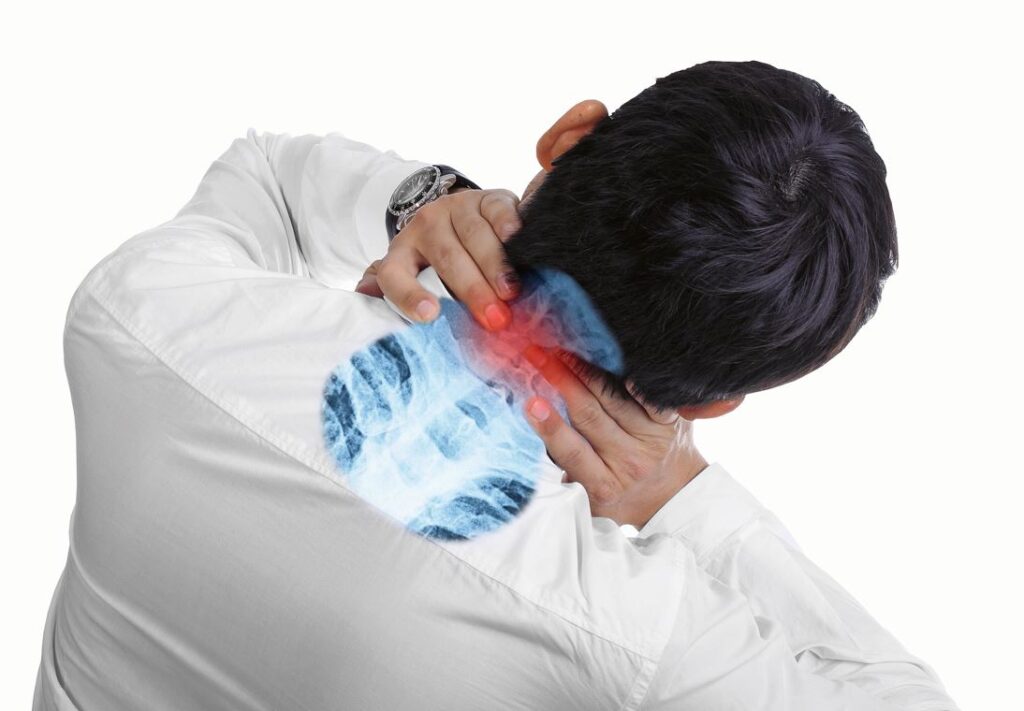Healthy workplaces
Musculoskeletal disorders (MSDs) and mental health problems such as stress and anxiety are the two most common causes of sickness absence in the EU. MSDs affect millions of workers and cost employers billions of euros.

Stress is thought to be responsible for about half of all days off work. Although physical risk factors are usually the most important work-related factor influencing the risk of developing MSDs, psychosocial factors can significantly increase this risk or contribute to the aggravation of an already existing disease.
For people with chronic MSDs, psychosocial factors can be a barrier to returning to (or taking up) employment. In addition, psychosocial problems such as depression and stress may be exacerbated by an existing MSD (especially if it is associated with chronic pain). There is concern that the increase in new forms of work (such as telecommuting or working from home) will result in an increase in psychosocial problems. Workers may feel isolated in such situations without the support of their colleagues. Some people find it difficult to maintain separation between (or reconciliation of) personal and professional lives when telecommuting, leading to conflict. Others, however, find telecommuting beneficial because it gives them a sense of control.
Psychosocial risks and the return to work
Psychosocial factors may also influence whether and under what circumstances people with MSDs return to work.
First, similar to physical factors, work-related psychosocial risk factors increase the risk of recurrence. It is therefore important to eliminate any physical or psychosocial hazards associated with the workplace that may have triggered or exacerbated MSD.
Secondly, individual (non-work-related) psychological factors can have a major influence on the return to work. These include, for example, that sufferers attribute the illness to work or believe that work is harmful and that their condition will worsen by returning to work. There is evidence that factors such as a "somatization tendency" (the tendency to perceive and worry about frequent physical symptoms) and health beliefs - including anxiety-related avoidance behaviors - are associated with the persistence of MSD-related pain and may have a negative impact on return to work.
How do psychosocial risk factors cause MSE?
Various theories based on the "stress response" explain the extent to which psychosocial factors can increase the risk of MSE. When affected individuals are exposed to unfavorable psychosocial factors, physiological changes occur in the body (the so-called "stress response"). These include altered breathing patterns and an accelerated heartbeat. Prolonged "stress" can lead to hormonal changes, such as the release of catecholamines or corticosteroids. Increased muscle tension, altered processes in tissue healing, and increased pain perception are all examples of how psychosocial factors can affect the development of MSE or exacerbate MSE.
In addition, when physical demands are high and there is a lack of support (from colleagues and other people), workers may try to work faster (and possibly forgo breaks). As a result, they may not pay attention to proper posture or carry extra loads (both of which increase the risk of muscle injury), or they may become careless and take risks (with a correspondingly higher risk of accidents). In addition, sufferers often do not recover sufficiently physically from such stresses, further increasing the risk of MSDs. Psychosocial pressure can also arise when demands are particularly intense, for example due to concerns about meeting targets or deadlines.
Prevention measures
- To reduce the burden of MSDs at both the individual and organizational levels, it is important to implement positive measures to eliminate the physical and psychosocial hazards following the risk assessment. The following should be considered when planning preventive measures:
- Identified hazards related to harassment or violence should be addressed as a priority. Violence in the workplace can be a serious safety and health issue with both physical and psychological consequences.
- Excessive or conflicting demands can also be a particular problem; here it helps to clarify priorities, roles and responsibilities, and decision-making paths.
Since psychosocial factors can obviously also have positive effects, corresponding further measures suggest themselves. While a lack of support from colleagues or superiors can have a negative impact, it may be helpful to improve the supply and quality of support. Such measures may also help mitigate the potentially adverse effects of other negative factors. For example, consideration could be given to developing systems of support for workers (including training for supervisors and managers). Regardless, however, efforts should always first be made to reduce the extent of overwork.
Such approaches can not only prevent the development of MSDs, but also help people with chronic MSDs to continue in their jobs. Several studies of chronically ill workers have shown that support from supervisors and colleagues plays an important role in employee retention (see Resources).
Source: Information sheet of the European Agency for Safety and Health at Work, 2022 (EU-OSHA) on "Psychosocial factors in the prevention of musculoskeletal disorders (MSDs)" of 9.8.2022.









